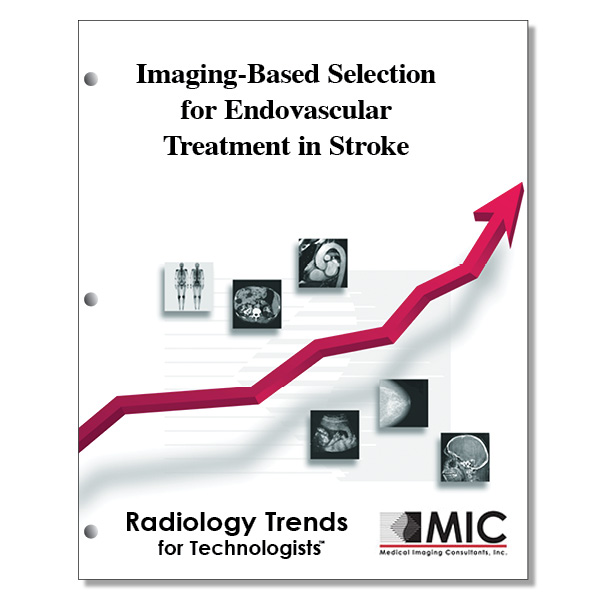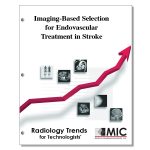

Imaging-Based Selection for Endovascular Treatment in Stroke
Imaging modalities for acute ischemic stroke patients are presented with focus on American Heart Association-American Stroke Association guidelines.
Course ID: Q00627 Category: Radiology Trends for Technologists Modalities: CT, MRI, Vascular Interventional2.5 |
Satisfaction Guarantee |
$29.00
- Targeted CE
- Outline
- Objectives
Targeted CE per ARRT’s Discipline, Category, and Subcategory classification:
Computed Tomography: 2.50
Procedures: 2.50
Head, Spine, and Musculoskeletal: 2.50
Magnetic Resonance Imaging: 2.50
Procedures: 2.50
Neurological: 2.50
Registered Radiologist Assistant: 2.50
Procedures: 2.50
Neurological, Vascular, and Lymphatic Sections: 2.50
Vascular-Interventional Radiography: 2.50
Procedures: 2.50
Vascular Interventional Procedures: 2.50
Outline
- Introduction
- Neuroimaging
- Computed Tomography
- MR Imaging
- Collateral Status
- Imaging Workflow
- Imaging-Based Treatment Selection
- Early Window (<6 Hours
- Late Window (6-24 Hours
- Patient Subgroups with Limited Evidence
- Low NIHSS Score
- Distal Occlusion
- Large Ischemic Core
- Posterior Circulation LVO
- LVO Beyond 24 Hours
- Conclusion
Objectives
Upon completion of this course, students will:
- know which six randomized trials revolutionized acute stroke care in 2015
- know which trial extended EVT into the late window in 2018
- understand in what ways the DAWN and DEFUSE trials varied
- be familiar with the role of vascular imaging for acute stroke patients
- understand the ultimate goal of neuroimaging in patients with AIS
- know the purpose of perfusion CT as part of a multimodal CT-based workup
- be familiar with the scoring system of the ASPECTS scale
- understand what useful information CT angiography provides to facilitate treatment planning and achieve safer and faster reperfusion
- know the advantages that CT has over MRI that make it the imaging workhorse in the vast majority of stroke centers
- understand the purpose of the FLAIR sequence included as part of a comprehensive MRI protocol for evaluating patients with early ischemia
- know the purpose of the MR angiography sequence included as part of a comprehensive MRI protocol for evaluating patients with early ischemia
- be familiar with the most commonly used imaging modality for assessing the extent of collaterals
- be familiar with the two commonly used scoring systems for the extent of collaterals
- understand which physician specialists should be part of a multidisciplinary stroke team to optimize treatment times and patient outcomes
- be familiar with the disadvantages of additional imaging in the early window
- know the five trials that were included in the HERMES pooled analysis
- understand what collateral circulation, when used for patient selection, may help to predict
- know how moderate-to-good collateral circulation is generally defined at CT angiography
- explain what the discrepancy between having an LVO and a low NIHSS score is often due to
- know what percentage of all LVOs are posterior circulation LVOs
